
Fundamentals
The concept of Oil Defense, at its most elemental understanding, refers to the practice of using natural oils to create a protective barrier on hair strands. This barrier serves to shield the hair from the rigors of environmental exposure and the stresses of daily manipulation. In its simplest form, it is the deliberate application of a lipid layer, often derived from plants, to fortify the hair fiber.
This acts as a primary line of resistance, working to mitigate moisture loss and physical damage that might otherwise compromise the hair’s integrity. For individuals beginning their journey into holistic hair care, understanding this foundational meaning opens pathways to appreciating ancient wisdom.
Across generations, from the sun-drenched landscapes of West Africa to the vibrant communities of the Caribbean, people relied on the earth’s bounty to care for their tresses. Their methods, passed down through whispers and hands-on teachings, centered on preserving hair health and beauty. The term Oil Defense, when viewed through this historical lens, captures these ancestral practices of applying botanical oils to fortify the hair against the elements and daily wear. It speaks to a deep, intuitive understanding of hair’s needs, predating modern scientific articulation.
Oil Defense, in its most basic sense, represents the ancient practice of anointing hair with natural lipids to form a protective shield against the world’s various challenges.
Think of it as a subtle, yet powerful, cloak for each strand. This protective layer ensures the hair retains its innate moisture, prevents excessive swelling and shrinking from humidity changes, and generally promotes a more resilient fiber. The inherent structure of textured hair, with its unique bends and twists, can render it more susceptible to moisture escape and breakage. Thus, the wisdom embedded in Oil Defense practices historically offered a practical, accessible solution to these concerns, long before laboratory analyses provided scientific explanations.
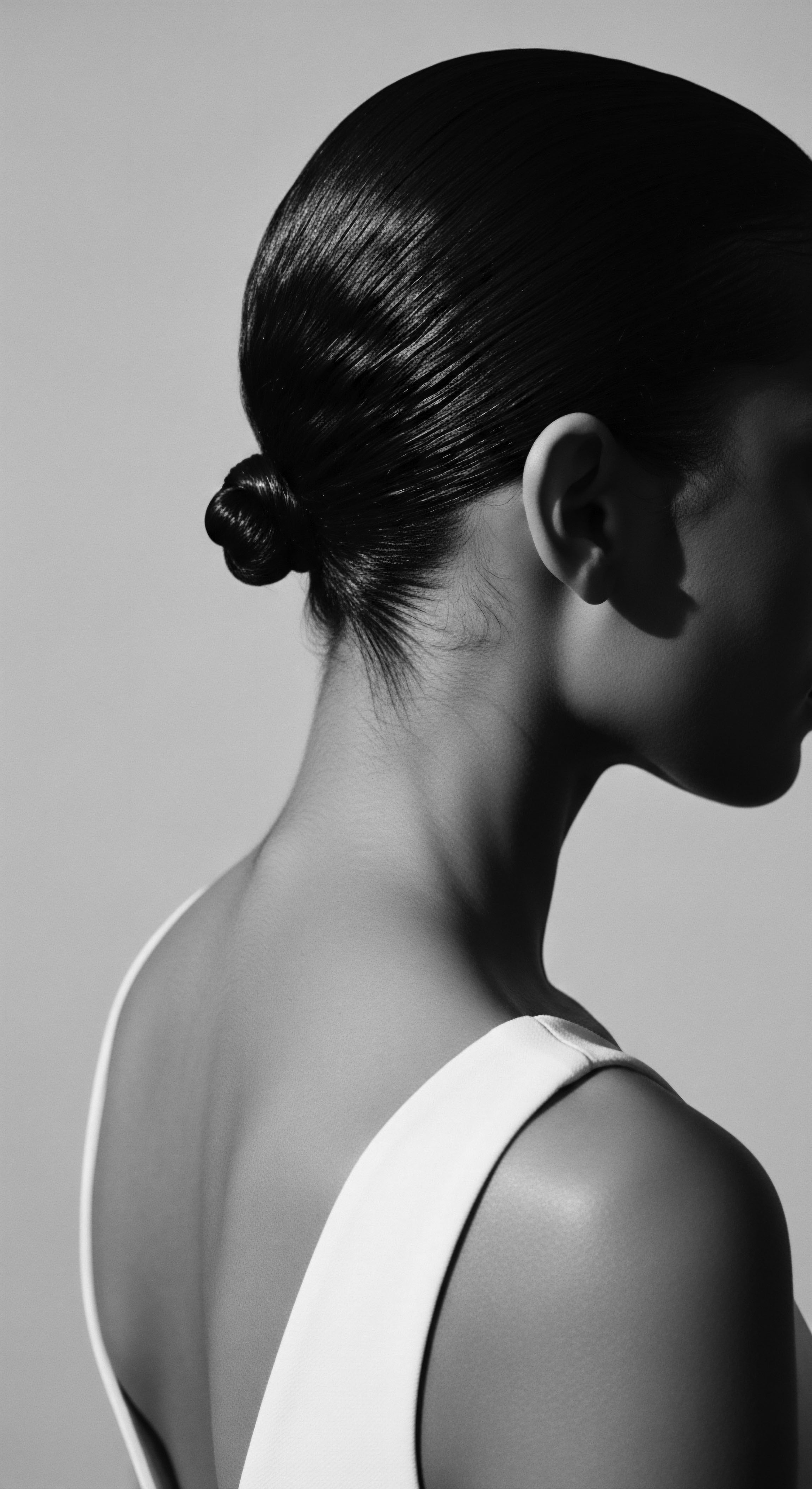
Historical Echoes of Protection
From the earliest human settlements, the quest for robust, vibrant hair has been a consistent thread through cultural history. Ancient civilizations recognized the protective qualities inherent in various natural oils. For example, historical records reveal that in Ancient Egypt, castor oil was a staple in hair care routines, praised for its capacity to condition and strengthen hair.
Egyptians blended it with honey and herbs to create hair masks promoting growth and shine, with reports indicating figures like Cleopatra herself employed castor oil for her lustrous black hair. This illustrates an early, profound understanding of oils as a defensive measure.
Similarly, in West Africa, the ancestral use of Shea Butter stands as a testament to enduring wisdom. Women traditionally gathered shea nuts, extracted the rich butter, and used it to protect hair from harsh sun and environmental damage. This ritual was not merely for cosmetic appeal but served a vital purpose in maintaining the structural integrity of hair in challenging climates. The inherent fatty acids and vitamins within shea butter provided a natural shield, helping strands remain soft, hydrated, and manageable.
- Castor Oil ❉ A foundational ingredient in ancient Egyptian hair care, valued for its moisturizing and strengthening qualities.
- Shea Butter ❉ A protective staple in West African traditions, guarding hair against environmental stressors.
- Coconut Oil ❉ Employed in ancient Indian Ayurvedic practices, it nourished the scalp and strengthened hair against premature graying.
These ancestral applications of oils embody the primary function of Oil Defense ❉ providing a shield and sustenance for the hair. It demonstrates a shared global heritage of recognizing the profound connection between nature’s offerings and hair’s endurance, laying the groundwork for more intricate understandings of its role.

Intermediate
Elevating our perspective, the intermediate meaning of Oil Defense delves into the specific mechanisms by which oils safeguard hair, particularly for textured, kinky, and coily strands. At this level, it involves comprehending how oils interact with the hair’s unique architecture to prevent challenges such as excessive moisture fluctuation, friction-induced damage, and the degradation of the hair fiber. This understanding moves beyond simple application, fostering a deeper appreciation for traditional practices and their scientific underpinnings.
Textured hair, characterized by its distinctive helical shape and often elevated cuticle scales, possesses inherent vulnerabilities. These structural attributes can contribute to increased porosity, meaning the hair readily absorbs and loses water, leading to dryness and brittleness. The very architecture of coils and kinks creates points along the fiber where cuticle lifting can occur, exacerbating moisture loss. Herein lies the remarkable efficacy of Oil Defense ❉ oils act as a sealant, helping to close these lifted cuticles and thus slowing the rate of water evaporation from the hair shaft.
Oil Defense, for textured hair, functions as a vital sealant, preventing the rapid ebb and flow of moisture that can compromise hair health and resilience.
Consider the ancestral ritual of Hot Oil Treatments. Our foremothers, having pressed oils from plants like coconut, almonds, and olives primarily for cooking, soon recognized their warming and protective capacities for hair. When heated and applied, these oils could penetrate the hair shaft more effectively, offering enhanced strength and reducing dryness. This traditional practice, still popular today, exemplifies an intermediate application of Oil Defense, recognizing that warmth can optimize the oil’s ability to create a fortifying layer.
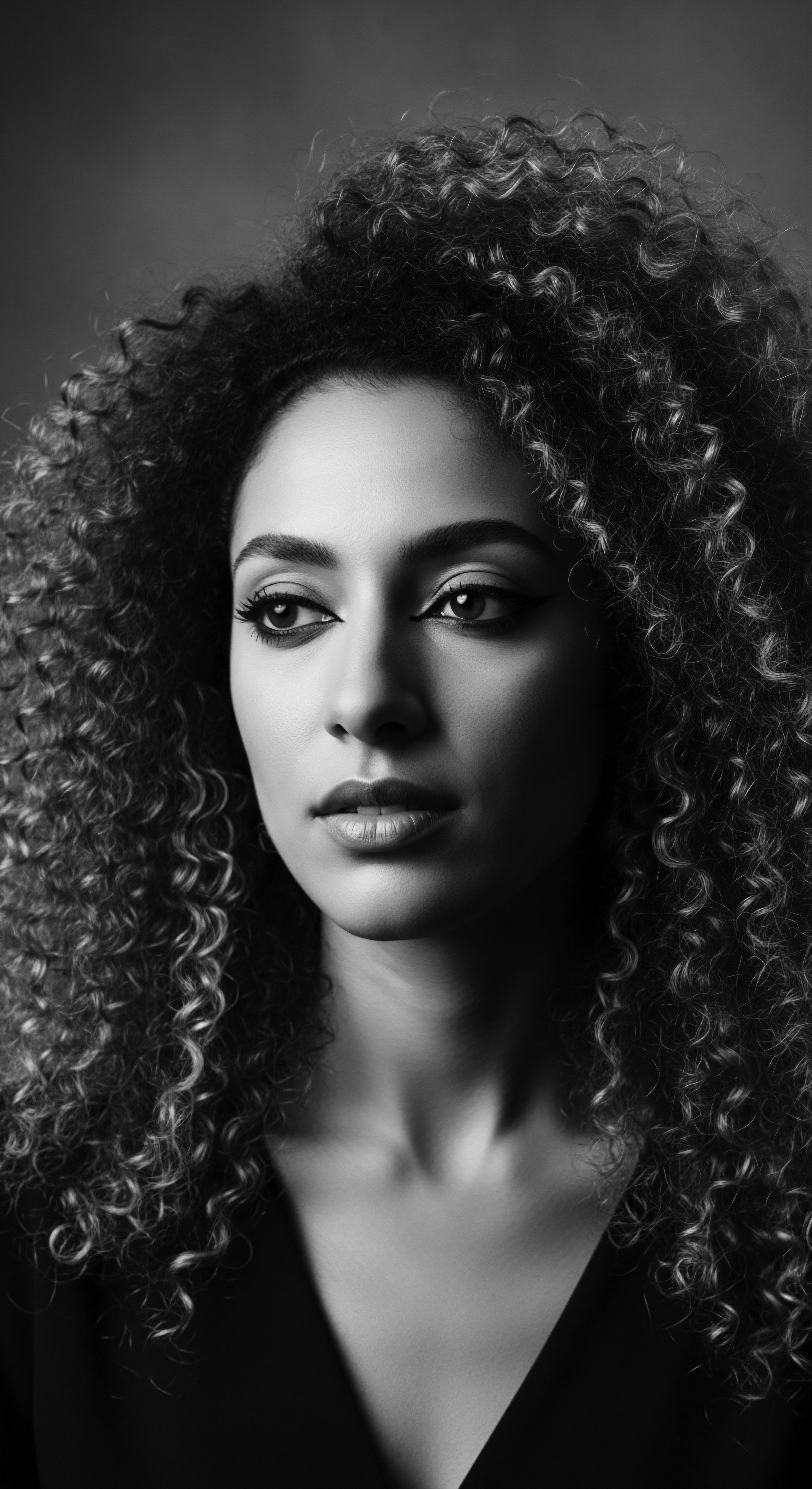
The Sealing and Softening Actions
The proficiency of oils in creating a defensive barrier stems from their hydrophobic nature. They repel water, forming a protective layer over the hair cuticle. This outer coating helps to smooth down the cuticle scales, which are often raised in highly porous textured hair, thereby reducing the surface area through which moisture might escape. This action is particularly crucial for maintaining hydration levels and minimizing the effects of environmental humidity on the hair.
Furthermore, many traditional oils, such as Coconut Oil, possess the ability to reduce protein loss from hair. While some oils merely coat the hair, certain oils, due to their molecular structure, can penetrate the hair shaft, reinforcing its internal structure and helping to prevent damage from daily styling and environmental factors. This dual action of sealing the exterior and supporting the interior represents a more nuanced understanding of Oil Defense.
- Moisture Retention ❉ Oils create a hydrophobic film, sealing in water and preventing its rapid evaporation from the hair shaft.
- Friction Reduction ❉ The lubricating quality of oils minimizes tangling and breakage during styling and manipulation.
- Environmental Shield ❉ Oils offer a physical barrier against pollutants, UV radiation, and harsh weather conditions.
The history of Jamaican Black Castor Oil (JBCO) offers a profound example of this intermediate understanding of Oil Defense. Originating in Africa over 4,000 years ago, castor oil traveled to the Caribbean through the transatlantic slave trade, becoming a culturally significant staple. Enslaved Africans in Jamaica adapted and preserved its use for medicinal and beauty purposes, relying on it to nourish hair and skin in challenging circumstances. JBCO’s thicker texture creates a protective coating on hair strands that seals in moisture and prevents dryness.
Its richness in ricinoleic acid improves blood circulation to the scalp, enhancing nutrient delivery to hair follicles, thereby promoting stronger roots and reducing breakage. This ancestral knowledge, rooted in survival and resilience, demonstrates the profound cultural and practical application of Oil Defense.
| Oil Shea Butter |
| Traditional Use in Heritage West Africa ❉ Protection from harsh sun, moisturizing. |
| Mechanism of Oil Defense Forms a moisturizing film, sealing cuticles, defending against environmental factors. |
| Oil Castor Oil / JBCO |
| Traditional Use in Heritage Ancient Egypt, Caribbean Diaspora ❉ Strengthening, promoting growth, deep conditioning. |
| Mechanism of Oil Defense Thick consistency creates a protective coating, preventing moisture loss and strengthening strands. |
| Oil Coconut Oil |
| Traditional Use in Heritage India, various tropical regions ❉ Nourishing, hair strengthening. |
| Mechanism of Oil Defense Penetrates hair shaft, reducing protein loss and fortifying against damage. |
| Oil These oils, revered across ancestral traditions, exemplify the intuitive application of Oil Defense to preserve hair health and cultural expression. |

Academic
The academic elucidation of Oil Defense transcends anecdotal observations, rooting itself in rigorous scientific inquiry into the intricate biophysical interactions between lipids and the hair fiber, particularly for textured hair types. This scholarly perspective requires a comprehensive understanding of hair’s complex morphology, its vulnerability to various stressors, and the precise molecular mechanisms by which specific oils confer protection. Here, Oil Defense emerges as a sophisticated interplay of chemistry, physics, and biology, affirming the deep wisdom embedded in ancestral hair care practices.
At its core, Oil Defense signifies the application of a hydrophobic layer that significantly mitigates the detrimental effects of hygral fatigue. Textured hair, especially those with tighter curl patterns, possesses a naturally elliptical cross-section and often numerous twists along the hair shaft. These structural characteristics lead to an increased propensity for cuticle lifting, creating pathways for rapid water ingress and egress. The constant swelling and shrinking of the hair fiber as it absorbs and desorbs water, a phenomenon known as hygral fatigue, weakens the hair’s protein structure, leading to reduced mechanical strength and increased susceptibility to breakage.
Academic exploration reveals Oil Defense as a sophisticated biomimetic strategy, leveraging hydrophobic lipids to stabilize hair’s delicate protein matrix against environmental and mechanical duress, particularly crucial for the structural integrity of textured strands.
A rigorous study published in Colloids and Surfaces B ❉ Biointerfaces (2022) illuminated the mechanistic effect of Coconut-Based Hair Oils (CBHO) in preventing an increase in hair porosity. This research demonstrated that surfactants, commonly found in shampoos, can diffuse into the hair structure, solubilizing protein moieties and consequently increasing hair’s internal porosity and surface area. The study employed nitrogen sorption methods, aligned with the Brunauer-Emmett-Teller (BET) theory, to quantify changes in hair pores within the cortex.
Their findings revealed that the introduction of CBHO significantly prevented this increase in hair porosity. Moreover, a statistically significant decrease in break stress and toughness, induced by surfactant damage, was observed and subsequently reversed by the application of CBHO.
The porosity reduction attributed to CBHO molecules is hypothesized to stem from their ability to block diffusion pathways within the endocuticle and the matrix portion of the cortical cells. This action limits protein-surfactant interactions, consequently reducing protein solubilization and loss. The implication for textured hair, often more prone to hygral fatigue due to its inherent structural characteristics, is profound.
This scientific validation underscores the efficacy of traditional oiling practices, which intuitively addressed the very challenges modern research now meticulously quantifies. It speaks to a deep, experiential understanding that long predated the tools of contemporary scientific analysis.
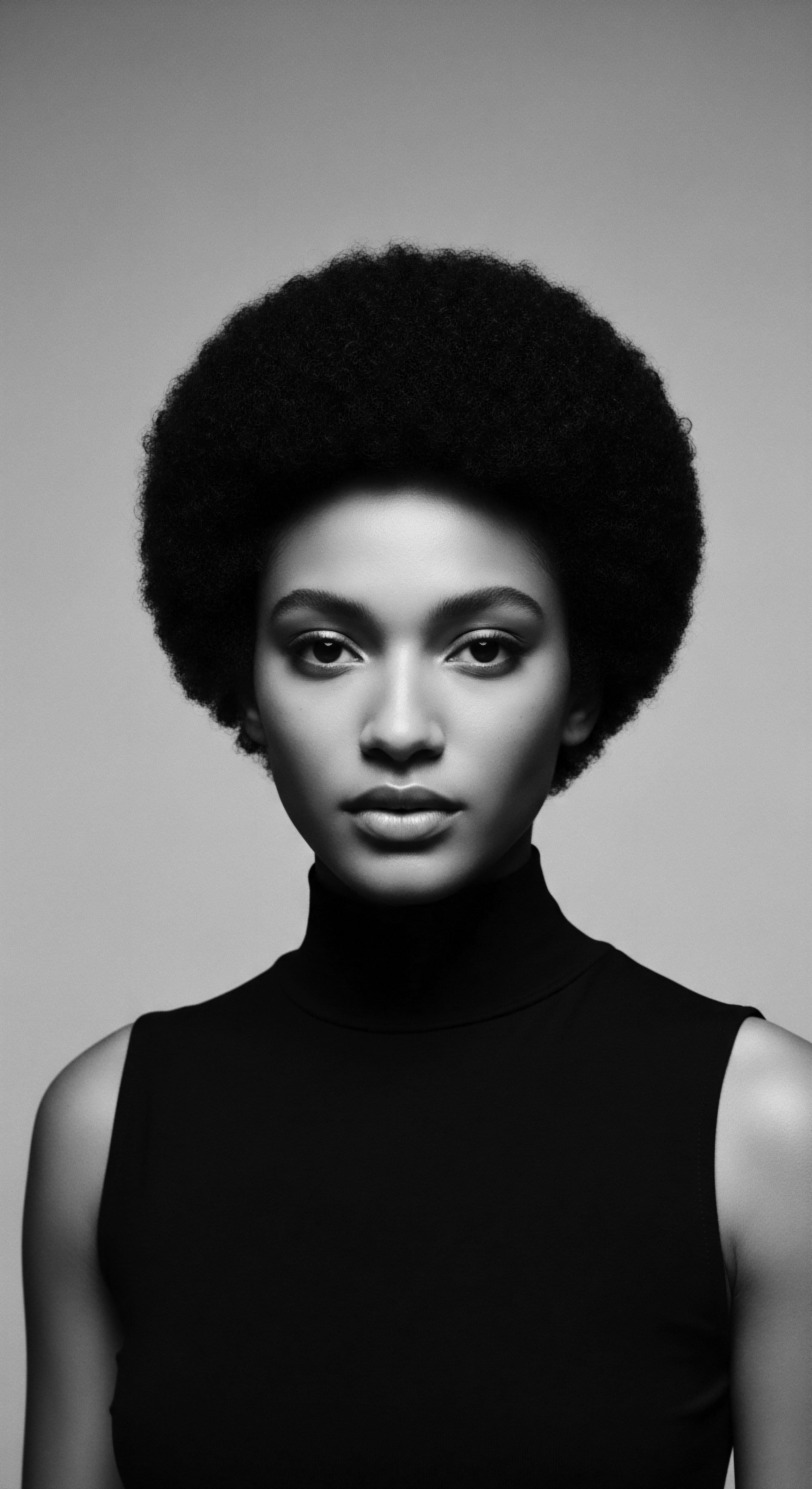
The Structural and Chemical Imperatives
The essence of Oil Defense, from an academic vantage, lies in its capacity to fortify the hair’s external cuticle layer and, for some oils, to penetrate the cortex. The hair cuticle, a protective outer layer composed of overlapping scales, functions as the primary shield against environmental assaults and mechanical friction. When these scales are lifted, either through chemical processes like coloring or physical stressors like aggressive combing, the hair becomes more vulnerable. Oils, particularly those with smaller molecular weights like coconut oil, can traverse these lifted cuticles, reaching deeper into the hair shaft.
The ricinoleic acid in Castor Oil, a fatty acid comprising 85-95% of its composition, provides unique benefits. This acid is known for its moisturizing properties, and some research suggests it can improve blood circulation to the scalp, thereby nourishing hair follicles and stimulating hair growth. The historical use of castor oil, notably Jamaican Black Castor Oil, became a critical component of hair care traditions among the African diaspora, especially due to its ability to create a protective barrier that seals in moisture and counteracts the drying effects of harsh environments. This exemplifies how a specific chemical compound within an oil directly supports the defensive purpose.
Beyond simple coating, certain oils contribute to the hair’s internal strength. Baobab Oil, derived from the “tree of life” common in African countries, is rich in omega-3 fatty acids, vitamins (A, C, D, E, K), and minerals. While direct scientific studies on its topical application for hair growth are limited, its moisturizing, strengthening, and emollient properties are well-documented. A 2015 study, though involving oral intake, demonstrated that supplementation of omega-3 and -6 fatty acids and antioxidants effectively combats hair loss by improving hair density – compounds found in baobab oil.
Furthermore, research has shown that baobab seed extract can protect African hair from UV degradation and improve elasticity and strength after UV-induced damage, serving as a powerful anti-aging solution for hair. This illustrates how the rich biochemical profile of traditional African oils contributes to a multifaceted defense mechanism.

Cultural Resilience and Biological Adaptation
The academic exploration of Oil Defense in the context of Black and mixed-race hair heritage extends into the adaptive strategies developed by diasporic communities. Hair, beyond its biological function, has always been a profound cultural communicator in African societies. Hairstyles conveyed age, marital status, ethnic identity, and even spiritual power.
The ritual of washing, combing, oiling, and braiding hair was a social opportunity for bonding and cultural transmission. When enslaved Africans were forcibly removed from their lands, they lost access to native tools and traditional oils, yet the need for hair defense persisted.
In response to new environmental stressors and the deliberate erasure of cultural practices, communities adapted. They continued to use available natural resources, sometimes substituting indigenous oils with locally accessible alternatives like bacon grease or butter, demonstrating remarkable resourcefulness and determination to preserve hair health and cultural continuity. This historical period highlights a critical phase in the evolution of Oil Defense, where the practice became not only about physical preservation but also a powerful act of resistance and cultural preservation. The very act of oiling hair became a quiet assertion of identity, an anchor to ancestral ways amidst profound displacement.
| Oil / Ingredient Coconut Oil (CBHO) |
| Key Scientific Property Prevents increase in hair porosity; blocks diffusion pathways in endocuticle and cortex. |
| Hair Benefit in Oil Defense Reduces hygral fatigue, limits protein loss, maintains internal hair strength. |
| Oil / Ingredient Ricinoleic Acid (Castor Oil) |
| Key Scientific Property Thick, hydrophobic fatty acid; improves blood circulation to scalp. |
| Hair Benefit in Oil Defense Creates protective coating, seals moisture, nourishes follicles, reduces breakage. |
| Oil / Ingredient Baobab Seed Extract |
| Key Scientific Property Rich in omega-3 fatty acids, vitamins; protects from UV degradation. |
| Hair Benefit in Oil Defense Enhances hair elasticity and strength against environmental damage, offers anti-aging benefits. |
| Oil / Ingredient Shea Butter (Fatty Acids) |
| Key Scientific Property High fatty acid content (oleic, stearic); similar to hair cuticle lipids. |
| Hair Benefit in Oil Defense Strengthens hair fiber by restoring cuticle cohesion, promoting impermeability, and deep moisturizing. |
| Oil / Ingredient These scientific revelations validate the ancestral ingenuity in selecting natural ingredients for robust hair defense. |
The modern natural hair movement, gaining momentum since the early 2000s, further exemplifies the enduring relevance of Oil Defense, blending ancestral wisdom with contemporary understanding. This movement, driven largely by Black women, has seen a resurgence in the use of oils like Jojoba Oil, prized for its ability to mimic the scalp’s natural oils and penetrate the hair shaft without leaving a greasy residue. Jojoba oil has become particularly favored for protective styles, such as braids, twists, and locs, as it hydrates while preserving the style’s integrity. Choosing these natural oils became an act of self-acceptance and a reclamation of cultural authenticity, aligning with a broader appreciation for ancestral knowledge and hair’s unique needs.
The continuing dialogue surrounding hair porosity, which describes hair’s ability to absorb and retain moisture, directly connects to the academic understanding of Oil Defense. Textured hair often exhibits high porosity due to its structural configuration. Individuals with high porosity hair benefit significantly from sealing hydrated hair with oils to retain moisture. This practice, known through methods like the “LOC” (Liquid, Oil, Cream) or “LCO” layering, involves hydrating the hair with a leave-in conditioner, followed by an oil to seal, and then a creamy moisturizer.
This multi-layered approach to Oil Defense optimizes moisture retention, reducing dryness and frizz, common concerns for textured hair. The scientific studies validating these practices affirm that ancestral methods, often born from necessity and keen observation, are profoundly effective and rooted in fundamental principles of hair science.
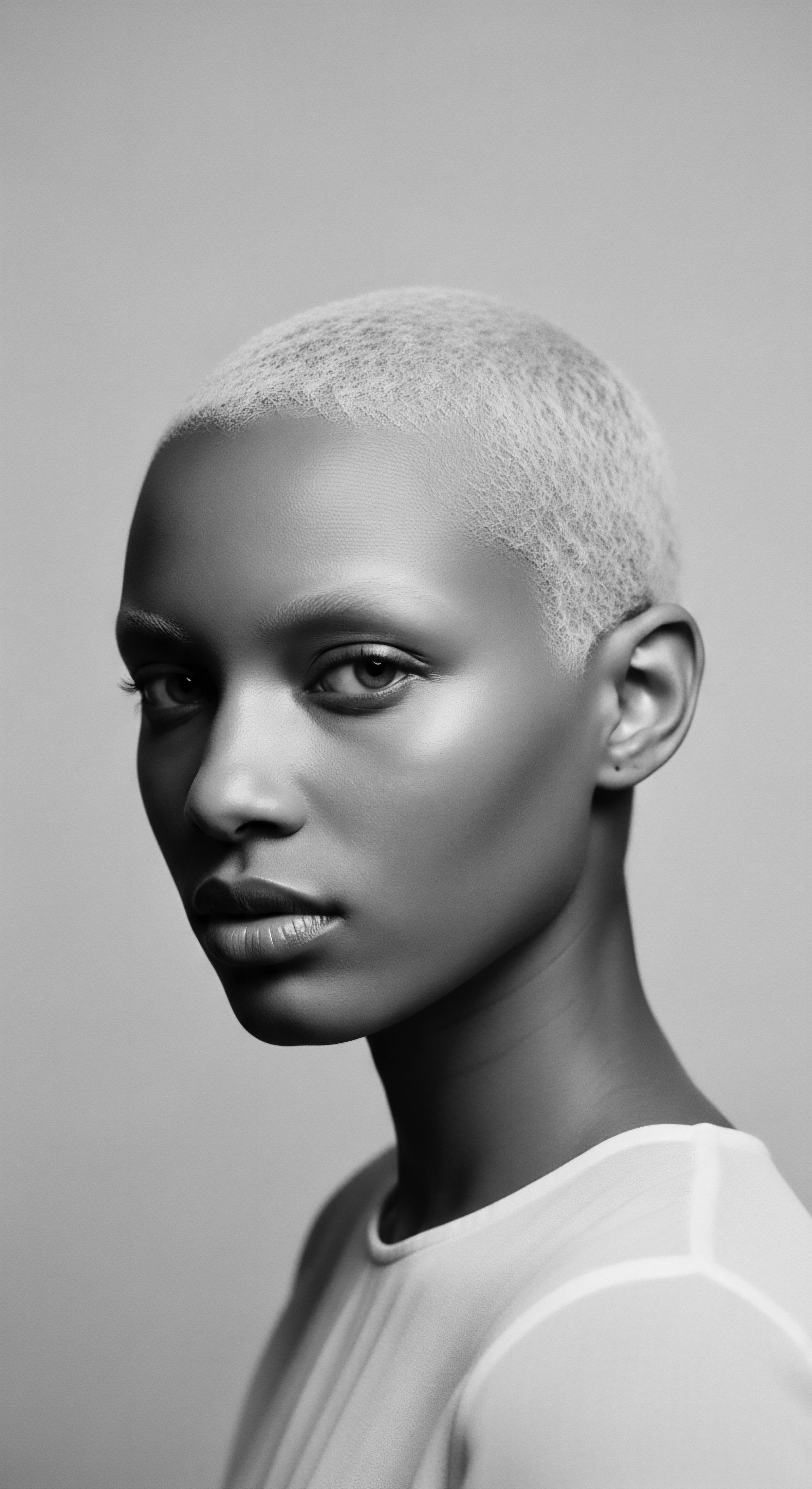
Reflection on the Heritage of Oil Defense
The journey through the concept of Oil Defense—from its elemental function to its profound academic and cultural implications—unveils a timeless narrative of resilience and deep wisdom. The very act of anointing textured hair with oils, a practice rooted in the ancient soils of Africa and carried through the currents of diaspora, transcends simple beautification. It speaks to a fundamental understanding of self-preservation, of honoring the body, and of maintaining connection to a heritage often challenged yet never truly broken.
The soul of a strand, as we have come to understand it, carries the echoes of countless generations who intuitively grasped the protective power of the earth’s lipids. It is a story told not just in scientific papers or historical texts, but in the enduring memory of hands tenderly tending to hair, in the shared rituals of community, and in the unspoken knowledge passed from elder to youth. This legacy reminds us that care is not a modern invention; it is a continuous thread reaching back to the origins of our being.
As we look to the future of textured hair care, the principles of Oil Defense remain as relevant as they were millennia ago. The scientific validation of ancestral practices offers a harmonious confluence of ancient wisdom and contemporary understanding, allowing us to move forward with a deepened respect for our heritage. It calls upon us to recognize hair as a living archive, each curl and coil a testament to resilience, beauty, and an unbroken lineage of profound care.
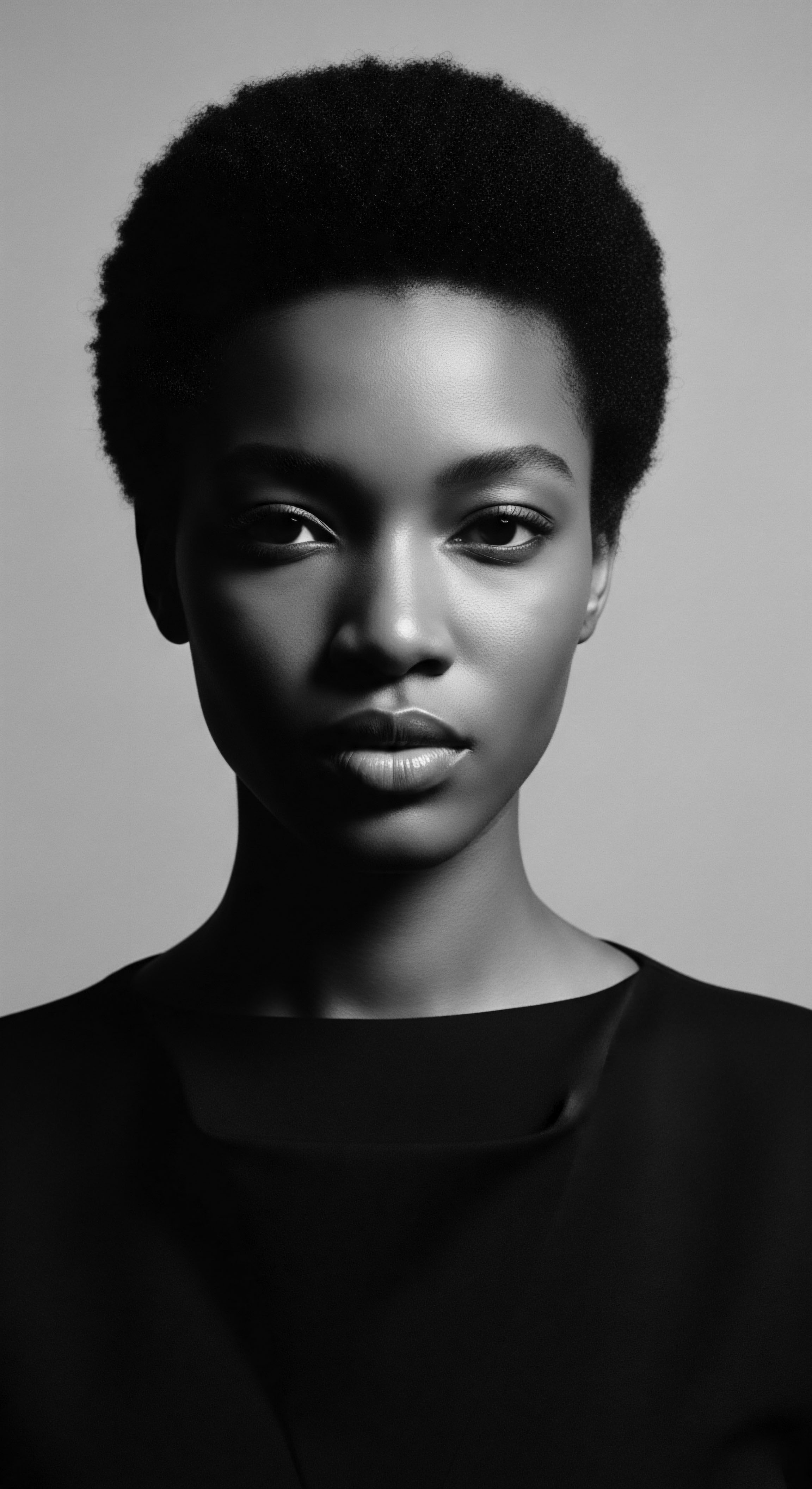
References
- “Hair Care Secrets of the Past ❉ What Our Ancestors Used for Healthy Hair.” Vertex AI Search, 2024.
- Ollennu, Amerley. “Here’s why hair oiling is the ancient ritual worth adopting.” Etre Vous, 2024.
- “The secret of ancient Egyptian beauty.” Arab News, 2012.
- “Hair Oiling ❉ The Ancient Secret to Lustrous Locks.” Vertex AI Search, 2024.
- Elliot, Chloé. “Are We Really Not Supposed To Use Oils On Natural Hair?” Refinery29, 2022.
- “Egyptian Honey and Castor Hair Oil.” Global Beauty Secrets, 2024.
- “African hair ❉ exploring the protective effects of natural oils and silicones.” UAL Research Online, 2019.
- “Understanding Hair Oiling ❉ History, Benefits & More.” Cécred, 2025.
- “The Untold Story of Jojoba Oil in Black Beauty.” BeautyMatter, 2025.
- “Why Jamaican Black Castor Oil Is Rich in Black History.” PushBlack, 2023.
- Smith, Jaicyea. “Origins of Beauty ❉ Hair Oiling.” STYLECIRCLE, 2021.
- Nyela, Océane. “Braided Archives ❉ Black hair as a site of diasporic transindividuation.” YorkSpace, 2021.
- Poponoe, Rebecca. “Women in Beauty Cultures and Aesthetic Rituals in Africa.” Oxford Research Encyclopedia of African History, 2023.
- “THE HISTORY & BENEFITS OF CASTOR OIL.” Qhemet Biologics, 2024.
- “Black History Month ❉ The Rich History of Our African Hair.” Livara Natural Organics, 2023.
- “7 Benefits of Jamaican Black Castor Oil on Hair.” Kuza Products, 2023.
- “Carrier Oils ❉ Key To Shiny, Healthy Hair.” Botanical Voyage, 2024.
- “African women’s hairstyles as communication media – A comparison between young and old women’s hairstyles.” The Research Journal of the Costume Culture, 2017.
- Priya, Ashish, et al. “Benefit of Coconut‐Based Hair Oil via Hair Porosity Quantification.” ResearchGate, 2022.
- “Embrace your natural curls ❉ Afro Hair.” ByErim, 2021.
- “CHECK OUT THESE TRADITIONAL HAIRCARE TREATMENTS.” the afro curly hair coach, 2023.
- “Baobab Oil Uses & Benefits Based on Research.” Healthline, 2020.
- “Does baobab oil accelerate hair growth?” Typology, 2024.
- “Celebrating Black Hair ❉ Empowering Beauty and Resilience.” Chosen Care, 2024.
- “Does baobab oil accelerate hair growth?” Typology, 2024.
- “3 Essential Oils Everyone with Natural Afro Hair Needs.” Black Beauty & Hair, 2021.
- “An Overview on Hair Porosity.” NYSCC, 2020.
- “Haitian Black Castor Oil vs. Regular ❉ Benefits Compared.” Kreyol Essence, 2025.
- “What Every Dermatologist Must Know About the History of Black Hair.” Dermatology Times, 2023.
- “Medicinal and Nutritional Benefits from the Shea Tree- (Vitellaria Paradoxa).” CORE, 2009.
- “How did black people do their hair in Africa before slavery began?” Quora, 2017.
- “Anti-Aging Hair Care through the Legendary Power of the Baobab.” Cosmetics & Toiletries, 2014.
- “The haircare virtues of shea butter.” Typology, 2023.
- “Exploring the Benefits of Baobab in Hair Care.” Clinikally, 2024.
- Sharma, G. M. Roux, K. H. & Sathe, S. K. “Benefit of coconut-based hair oil via hair porosity quantification.” PubMed, 2022.
- “High Porosity Hair ❉ What It Means For Your Hair.” HairKnowHow.Com, 2023.
- “Porosity and Resistance of Textured Hair ❉ Assessing Chemical and Physical Damage Under Consumer-Relevant Conditions.” Bohrium, 2025.
- “The Resilient Tresses ❉ West African Black Hair History from the 1400s to Today.” Vertex AI Search, 2024.
- “Shea Butter for Hair ❉ Top 10 Benefits, Uses.” St.Botanica, 2024.
- “A Black “Hair” story Crowning Our Glory.” VERCIDA, 2023.
- “Examining the Experiences of Black Women with Natural Hair.” CUNY Academic Works, 2014.
- “Shea Butter for Hair and Scalp Health.” Hims, 2025.
- “Hair Oils ❉ Indigenous Knowledge Revisited.” PMC, 2017.
